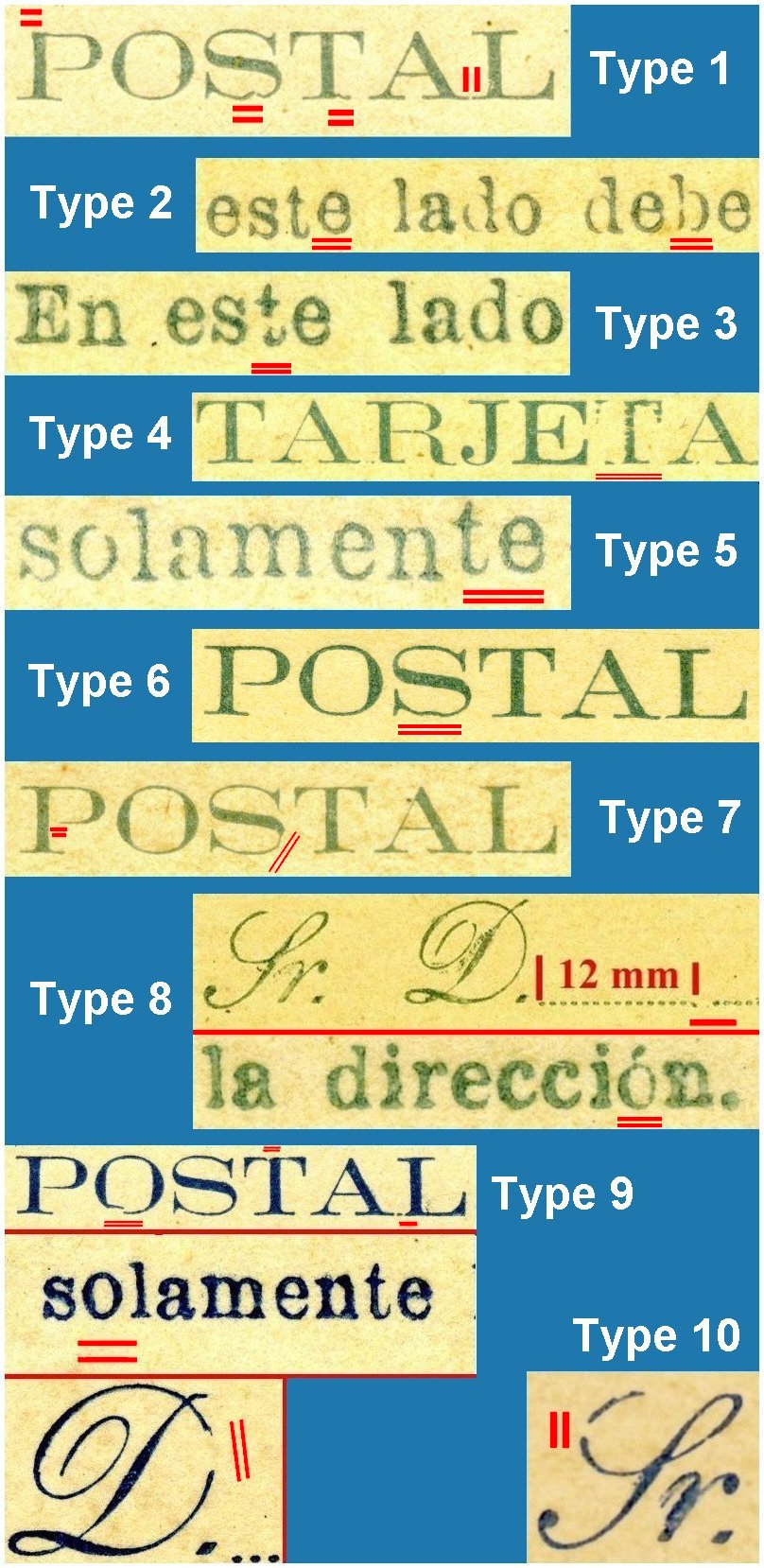Postal Cards - Issue of 1896: Alfonso XIII (shown as infant)
Tarjetas Postales - Emisión de 1896: Alfonso XIII (el pelón)
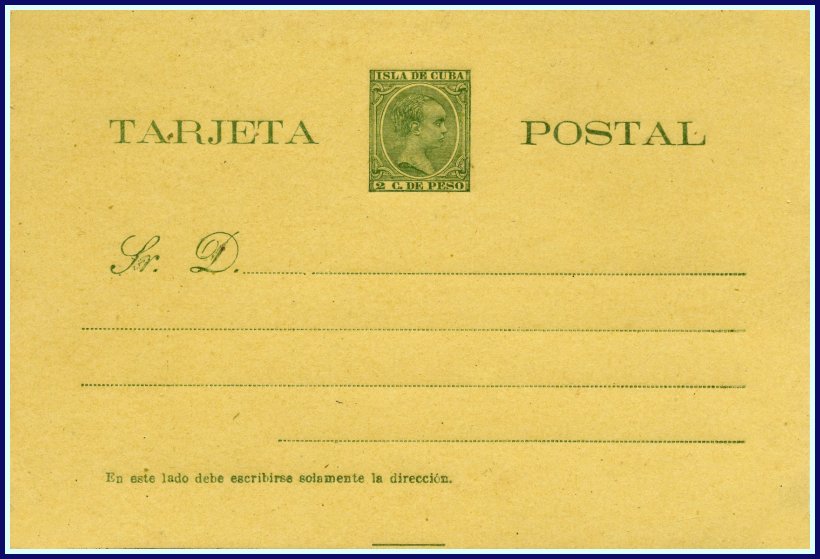
1896 Type 7 Reprint of 1892 - 2 centavos Alfonso XIII (el pelón / baldie) — green on yellow / verde s. amarillo
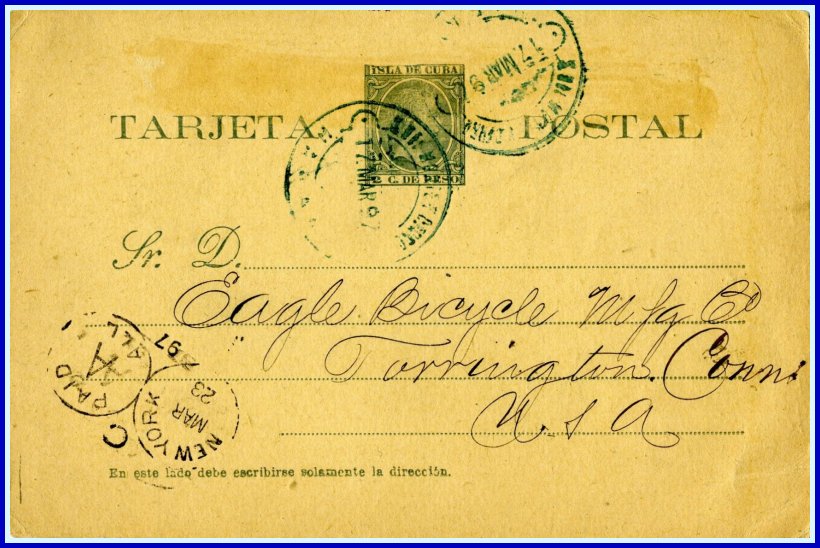
1896 Type 1 Reprint - 2 centavos - used 17 March 1897 to Farmington, Connecticut, USA
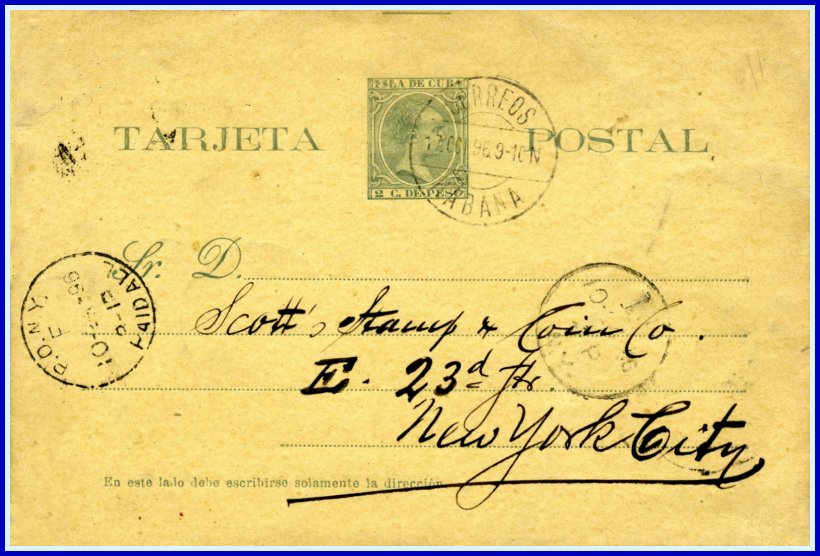
1896 Type 2 Reprint - 2 centavos - used 17 October 1896 to New York City
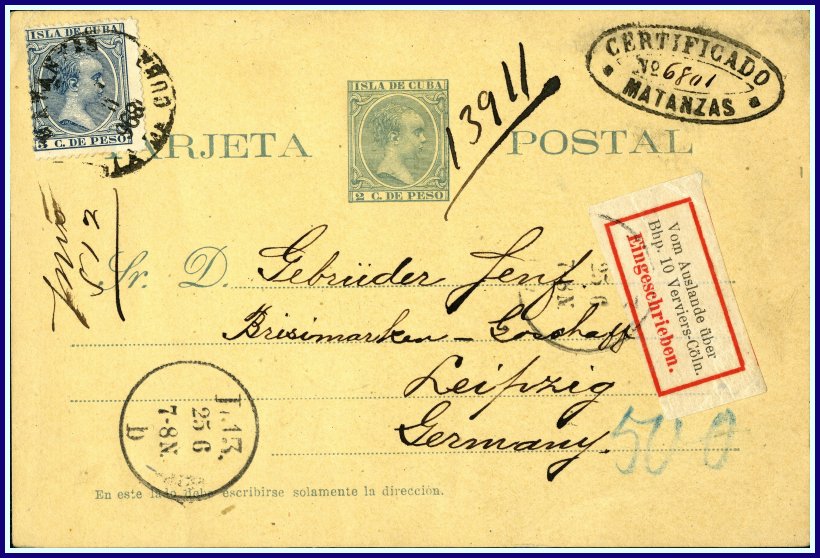
1896 Type 3 Reprint - 2 centavos uprated and registered - used 1896 to Leipzig, Germany
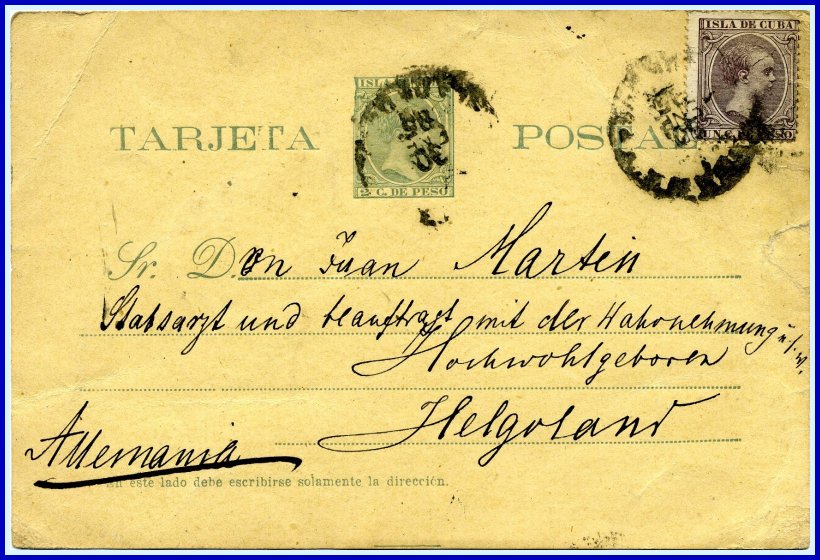
1896 Type 4 Reprint - 2 centavos uprated by one centavo adhesive stamp - used 30 January 1896 to Helgoland, Germany
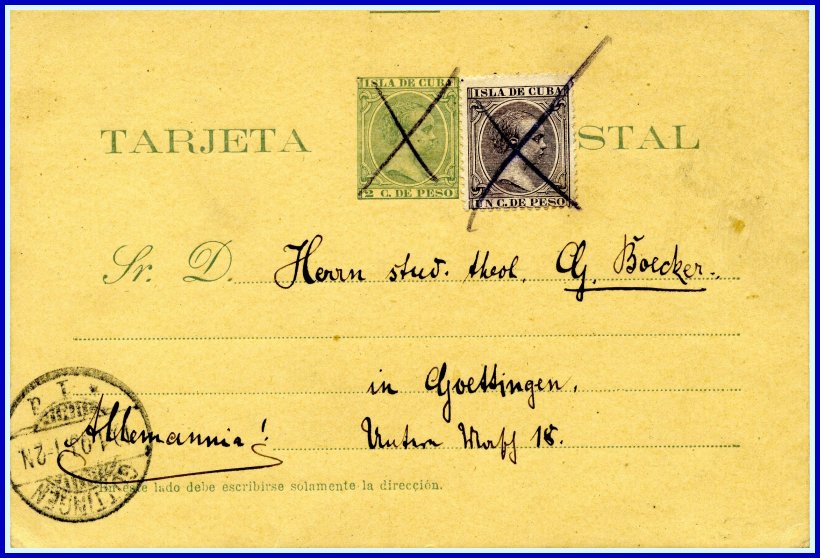
1896 Type 5 Reprint - 2 centavos uprated by one centavo adhesive stamp - used 26 December 1896 to Göttingen, Germany
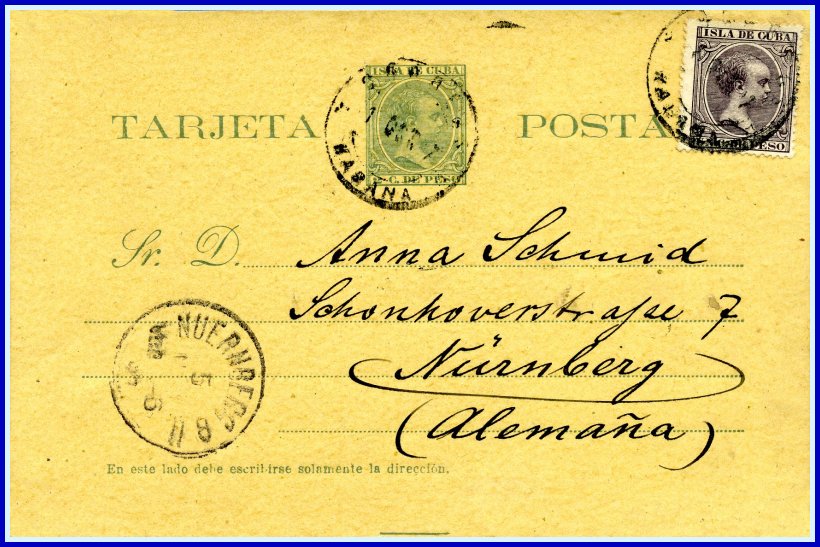
1896 Type 6 Reprint - 2 centavos uprated by one centavo adhesive stamp - used 17 October 1897 to Nürnberg, Germany
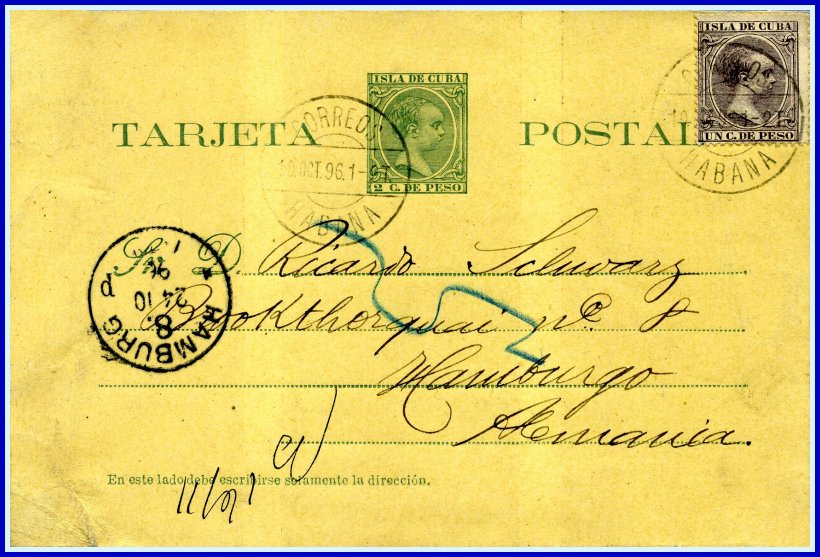
1896 Type 7 Reprint - 2 centavos uprated by one centavo adhesive stamp - used 10 October 1896 to Hamburg, Germany
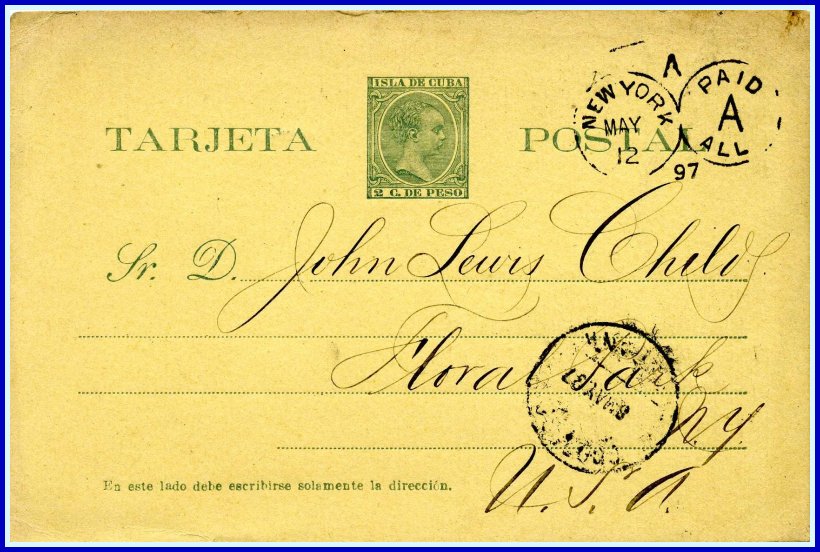
1896 Type 8 Reprint - 2 centavos - used 8 May 1897 to Floral Park, New York
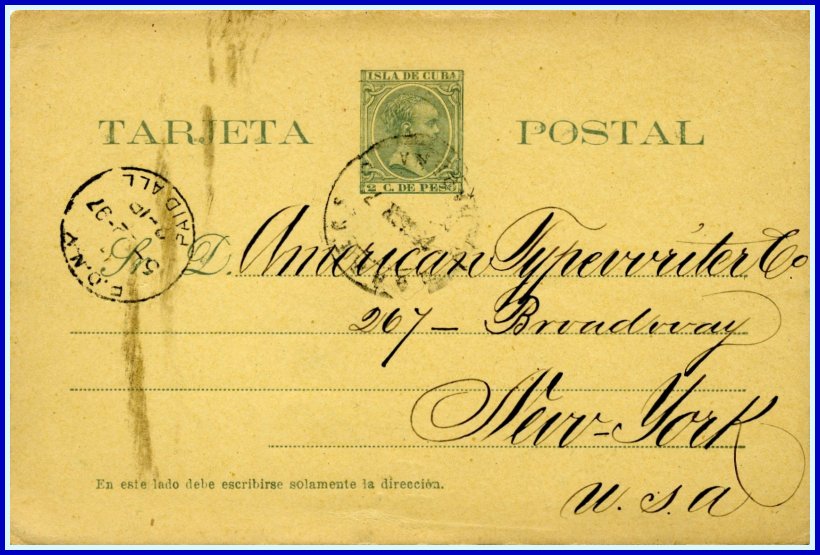
1896 Type 9 Reprint - 2 centavos - used 18 May 1897 to New York City
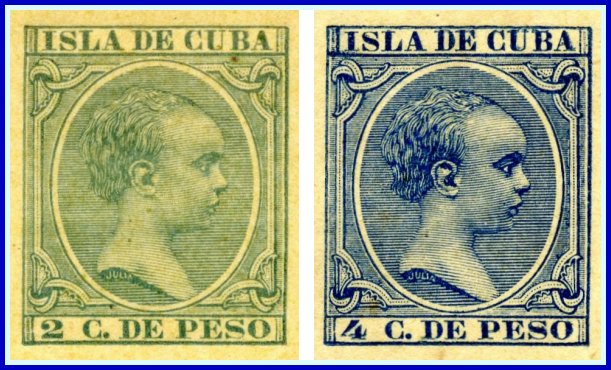
1896 Indicia
| Technical Details / Detalles Técnicos | |
|---|---|
| Issue Date / Fecha de Emisión | 1896 |
| Size / Tamaño | 145 x 98 mm |
| Denomination / Denominación | 2 & 4 centavos de peso |
| Printing Impresión |
Printed by typography for the Fábrica Nacional de Moneda y Timbre Impresa en tipografía por la Fábrica Nacional de Moneda y Timbre |
| Period of Circulation Periodo de Circulación |
1896 - January 1898 1896 - Enero 1898 |
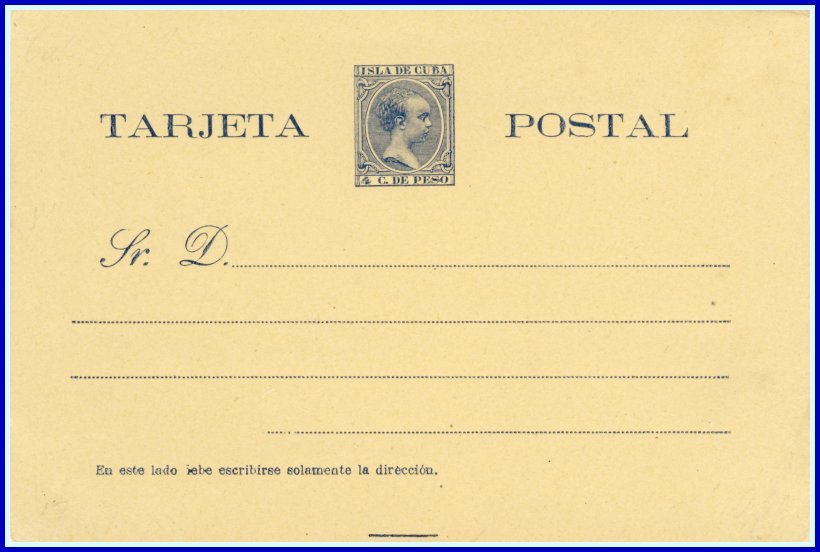
1896 Type 6 Reprint of 1894 — 4¢ Alfonso XIII (el pelón / baldie) — blue on yellow / azul sobre amarillo
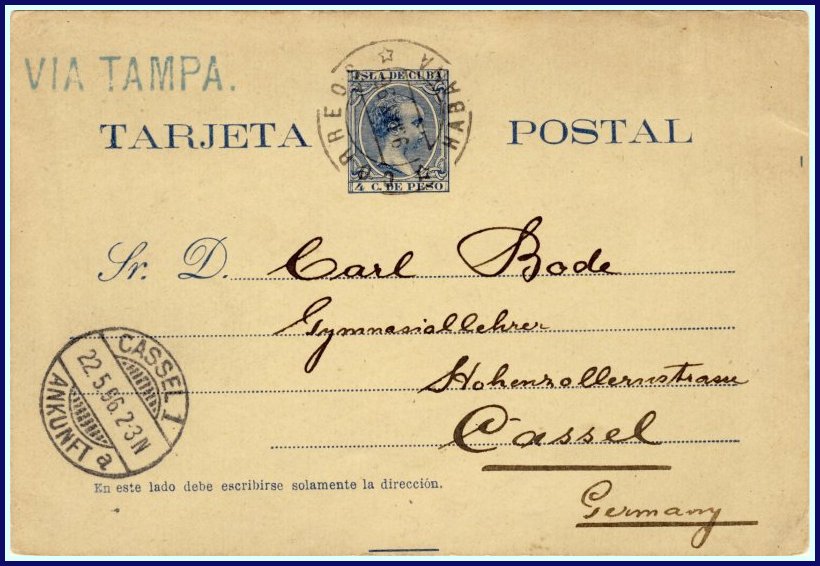
4¢ Alfonso XIII - Type 3 - used 9 May 1896 to Cassel, Germany
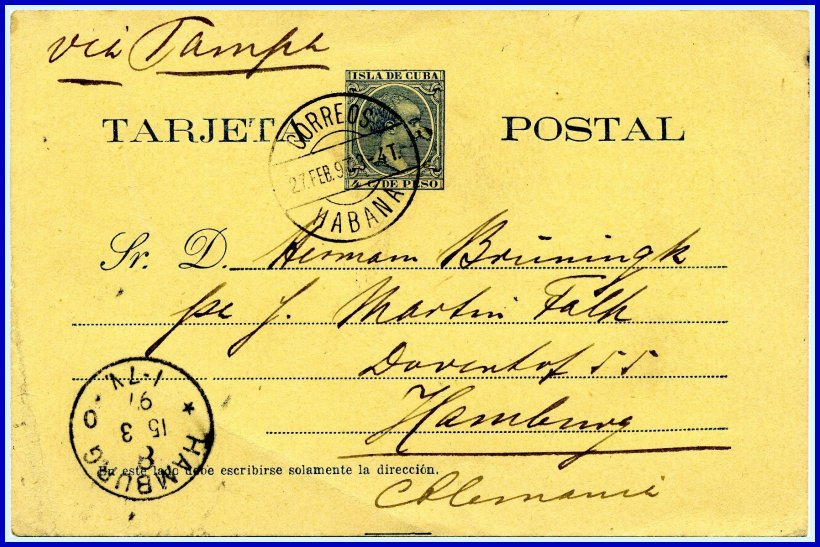
4¢ Alfonso XIII - Type 4 - used 27 February 1897 to Hamburg, Germany
Examples of used 4 centavos cards are relatively rare because the postal rate to Europe was 3 centavos.
Usually one sees a 1 centavo adhesive stamp on a 2 centavos card to northern Europe. The postal rate to the U.S. was 2 centavos.
1896 Plating Illustrations
